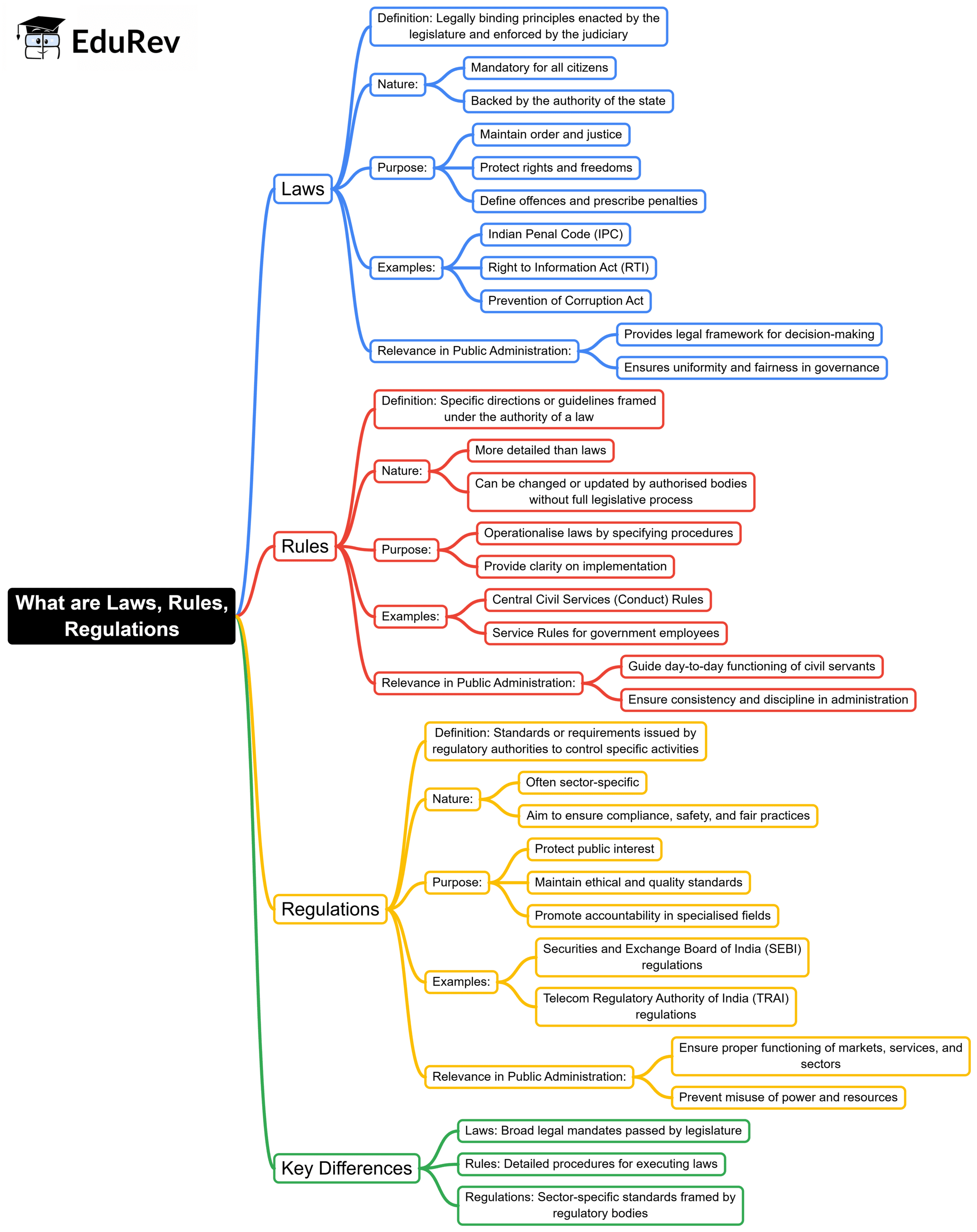UPSC Exam > UPSC Notes > UPSC Mains: Ethics, Integrity & Aptitude > Mind Map: What are Laws, Rules and Regulations
Mind Map: What are Laws, Rules and Regulations | UPSC Mains: Ethics, Integrity & Aptitude PDF Download

The document Mind Map: What are Laws, Rules and Regulations | UPSC Mains: Ethics, Integrity & Aptitude is a part of the UPSC Course UPSC Mains: Ethics, Integrity & Aptitude.
All you need of UPSC at this link: UPSC
|
78 videos|139 docs
|
FAQs on Mind Map: What are Laws, Rules and Regulations - UPSC Mains: Ethics, Integrity & Aptitude
| 1. What are the key differences between laws, rules, and regulations? |  |
Ans.Laws are formal legal statutes enacted by a legislative body, representing the highest authority in a jurisdiction. Rules are specific directives or guidelines created to implement laws, often established by governmental agencies. Regulations are detailed provisions that govern specific activities, providing clarity and enforcement mechanisms for laws and rules.
| 2. How are laws created and enacted in a democratic system? |  |
Ans.In a democratic system, laws are created through a legislative process that typically involves several stages: proposal (drafting of a bill), discussion (debate among legislators), approval (voting), and enactment (signing by the head of state). Public participation and input may also be encouraged during the process to ensure representation of citizens' views.
| 3. What role do regulations play in the enforcement of laws? |  |
Ans.Regulations serve as a practical framework for enforcing laws. They provide specific details on how the laws should be applied, outline procedures for compliance, and establish penalties for violations. This helps ensure that laws are implemented effectively and consistently across different sectors and issues.
| 4. Can laws and regulations change over time? If so, how? |  |
Ans.Yes, laws and regulations can change over time through a process known as amendment or repeal. Laws may be amended by the same legislative body that enacted them, while regulations can be updated by the relevant governmental agency in response to new information, societal needs, or technological advancements. Public feedback can also influence these changes.
| 5. What are some examples of major laws and regulations that impact society? |  |
Ans.Examples of major laws include civil rights legislation, environmental protection laws, and labor laws. Regulations stemming from these laws might involve standards for workplace safety, emissions controls for industries, and guidelines for non-discrimination. These laws and regulations collectively shape societal norms and protect public interests.
Related Searches
















